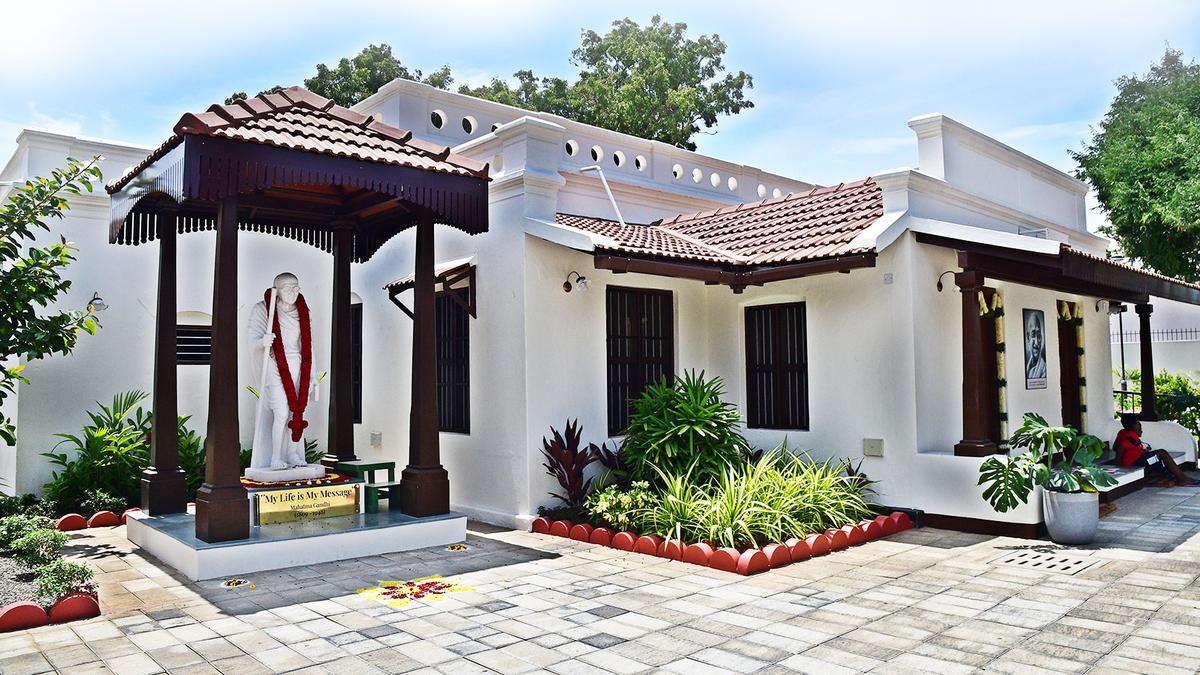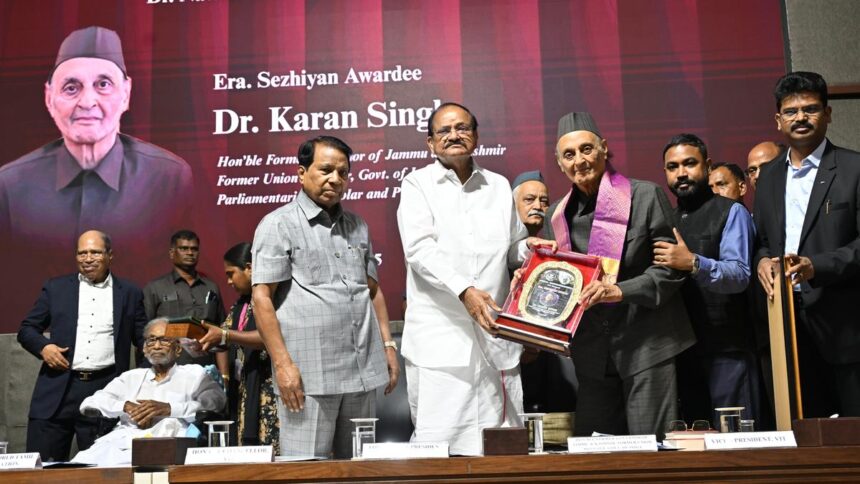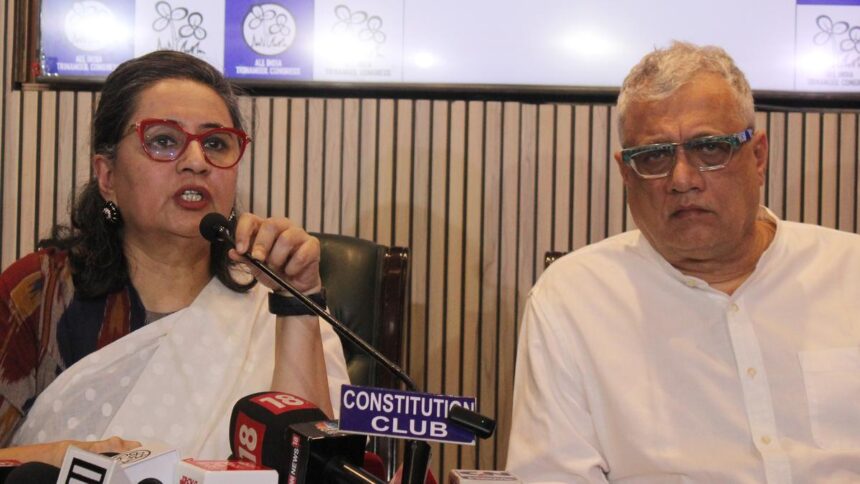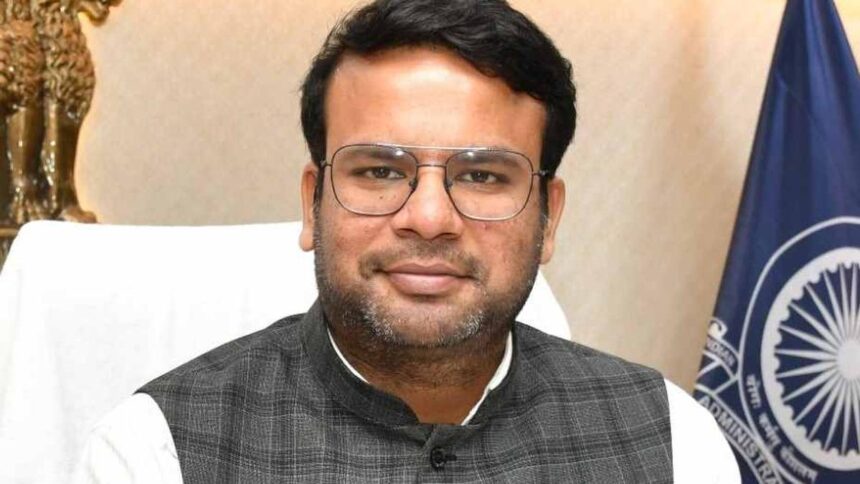The leader who pulled an oil press
Prisoner no. 1541 arrived at the Coimbatore Central Prison on July 9, 1908. He spent two years, four months, and 22 days in the prison, a difficult period in his life. VO Chidambaram Pillai, the lawyer-businessman who took the British head on by starting the Swadeshi Steam Navigation Company, was arrested on charges of sedition and given two life sentences. Known as Kappalottiya Tamizhan, VOC grew to be a veritable leader in Thoothukudi, purchasing ships as a challenge to the monopoly of the British India Steam Navigation Company. After his arrest though, the company had to be shut down, and VOC himself suffered while in incarceration.
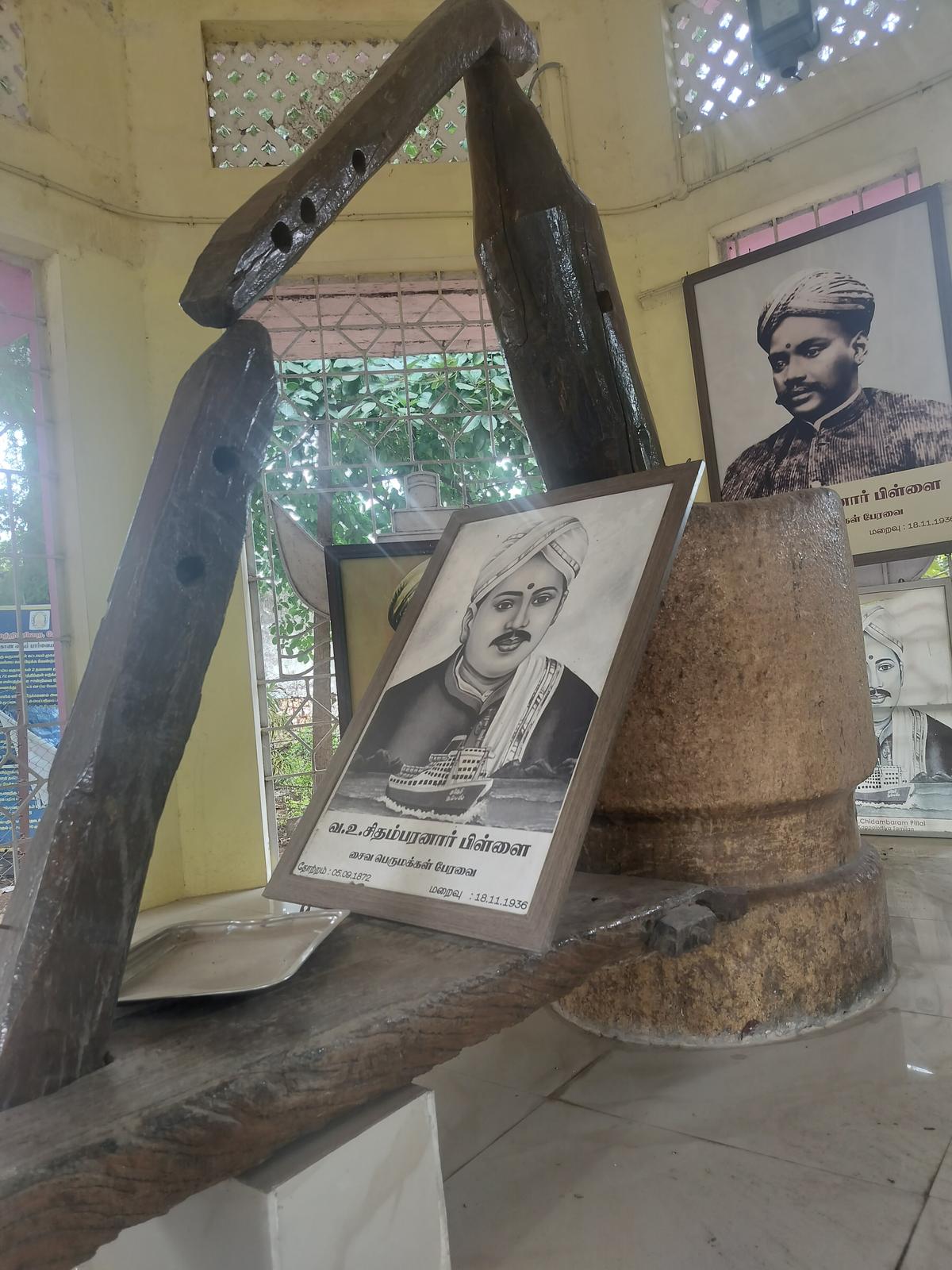
The wooden oil press that VOC was forced to pull by hand in the hot sun, seen at the Coimbatore Central Prison.
| Photo Credit:
Akila Kannadasan
We arrive at the prison he was lodged in, one overcast evening.
Upon his arrival, VOC’s hair was cut, and he was offered an aluminium plate to eat in; thick, white clothes to wear; his feet were chained, and he was lodged in a dark room and offered ragi koozh to eat. In a small memorial near the main prison building, is housed the wooden oil press that was operated by VOC himself. A board outside describes how the freedom fighter was tortured by the prison authorities.
‘He was forced to pull the wooden oil press weighing 250 kilos in the hot Agni Natchathiram sun,’ it reads, adding how even as he did so, VOC kept repeating ‘Vande Mataram’. The leader was hence known with the epithet Sekkizhutha Semmal, that can be loosely translated to, ‘the respected one who pulled an oil press.’
Unable to see him suffer, his fellow prisoners staged a protest, resulting in the transfer of VOC to Kannur Central Prison in Kerala in 1910. Today, the memorial that houses the infamous press attracts political leaders who visit it on important occasions to remember VOC’s contribution to the Freedom Movement.
Mahatma Gandhi Memorial, Podanur
Until a few years ago, the tile-roofed house that belongs to the family of inventor and entrepreneur GD Naidu in Podanur, was just another building by the roadside. GD House, however, is no ordinary place. It played host to Mahatma Gandhi during his visit to Coimbatore on February 6, 1934. Gandhi was travelling to collect funds for his Harijan Welfare organisation, and happened to halt there for the night.
After going through his accounts late into the night and a two-hour sleep, he laid the foundation stone for Sri Ramakrishna Vidyalaya the next morning in front of the house. Back then, the Vidyalaya occupied the bungalow.
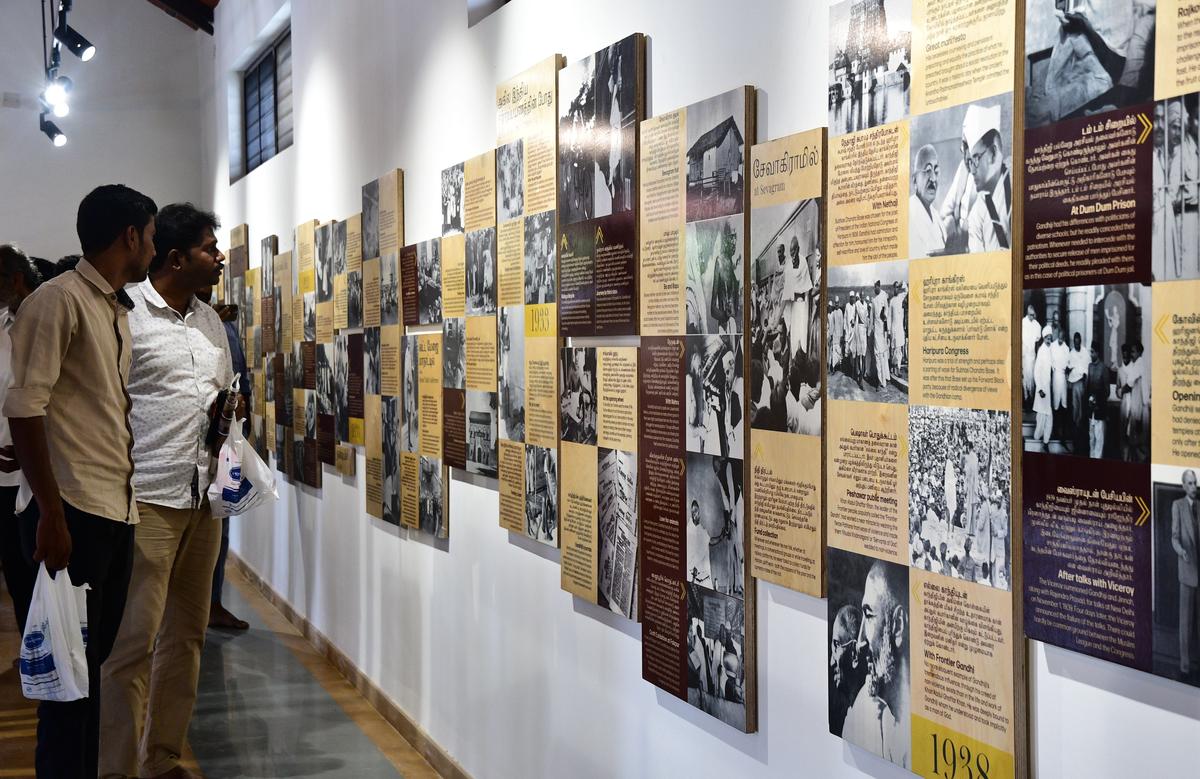
Mahatma Gandhi Memorial at Podanur has been restored for public visit and features a library and photo gallery.
| Photo Credit:
Siva Saravanan S
GD House was renovated with its original architecture intact and was opened for the public as Mahatma Gandhi Memorial on October 2, 2022, the Mahatma’s 153rd birth anniversary. It features an exhibition space that displays replicas of artifacts used by Gandhi, such as his charkha, footwear, spectacles, Ingersoll watch, among others. There are neatly-labelled photographs that detail his life story in a photo gallery in the premises. Photos from his childhood, his South Africa years, and his hand-written letters can be found as part of the display.
A library houses books on Gandhi and there are also screenings of documentaries on his life. The Memorial also has a semi-open conference space, and a statue of Gandhi erected in remembrance of his visit 91 years ago.
It is located at 11/10 A, Chettipalayam Road, Podanur. Visiting hours are from 9am to 6pm, Monday to Saturday. Entry is free. Call 9087355068 for details.
NG Ramasamy statue
Most of us in the city might have passed by the statue of trade union leader and freedom fighter NG Ramasamy at the Singanallur signal. He can be seen in a dhoti and kurta, a thundu over his shoulders. A Gandhian, he is an important leader from Coimbatore who participated in the Freedom Movement.
The statue of freedom fighter and trade union leader NG Ramasamy seen at Singanallur in Coimbatore.
| Photo Credit:
PERIASAMY M
A mill master himself, NG Ramasamy worked tirelessly for the welfare of his fellow mill workers. He formed a trade union that also fought against the British. Ondipudur was then a hub for trade union activity, and Ramasamy held many secret meetings at night in the the outskirts of the neighbourhood to scheme against the British. Among the many plans he came up with, was disrupting flights at the Sulur Aerodrome and setting fire to liquor shops in the city.
Despite his arrest the next morning, the trade union members acted as planned on August 13, 1942, torching a goods train passing through Singanallur on the way to Madras. Notably, after the aerodrome was set on fire, a thimir vari was imposed on people in the locality.
NG Ramasamy participated in the Quit India Movement and was a staunch follower of Gandhi’s principles. He was imprisoned in Vellore, dying very young following ill-health, and sadly, was not alive to taste freedom from British rule.
Published – August 16, 2025 12:49 pm IST






